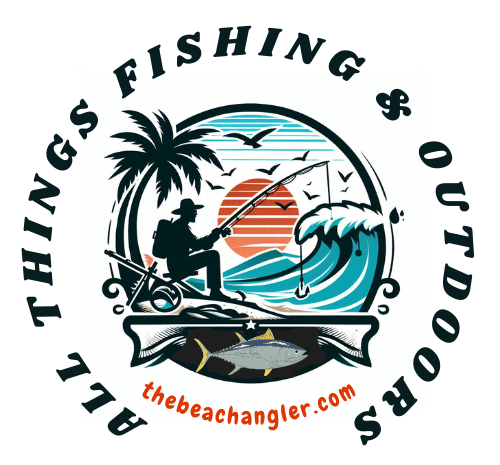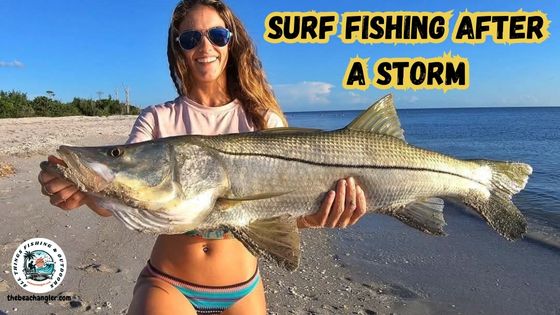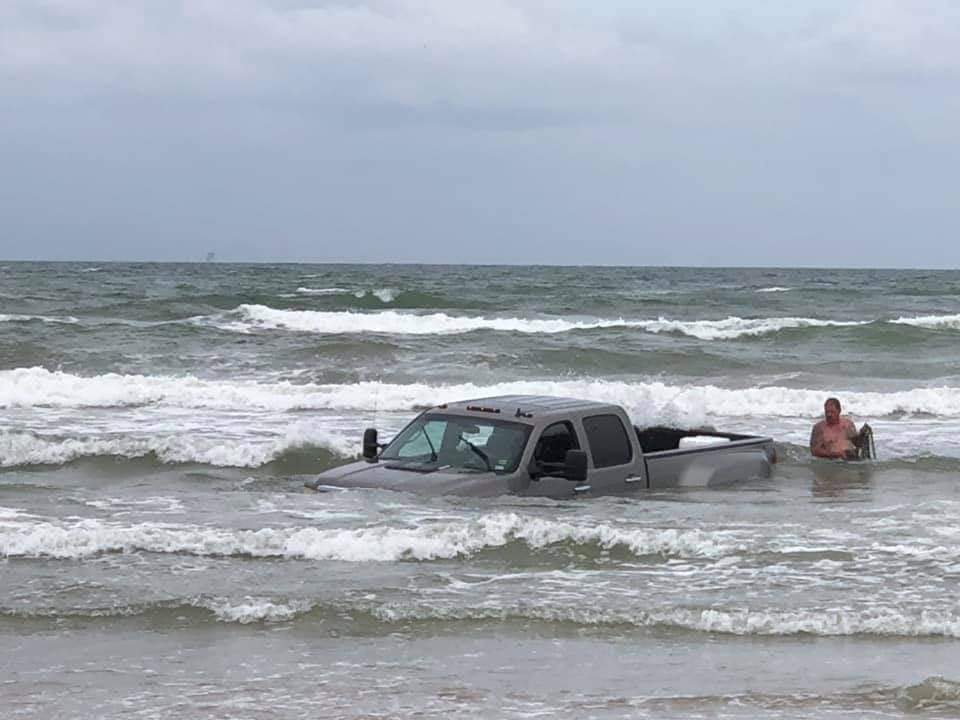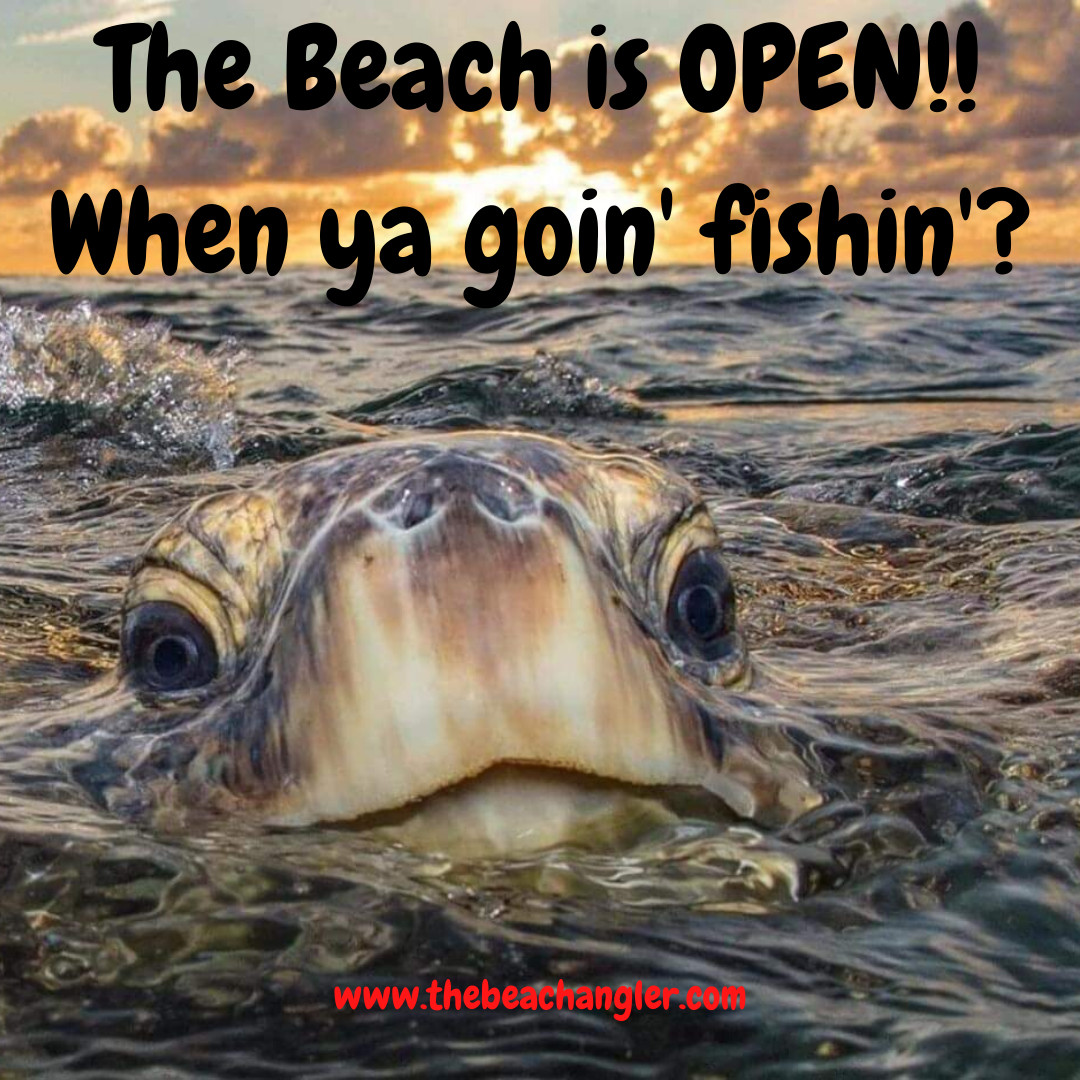Surf Fishing after a storm can be great, or it can be terrible, depending on a number of factors. Storms are nature’s way of shaking things up, and when it comes to the ocean, this can lead to some pretty interesting changes that affect fishing.
QUICK LOOK 6 Keys to Surf Fishing After a Storm
- After a storm passes, one of the biggest changes you’ll notice in the surf fishing scene is the sudden availability of food for fish.
- When the storm has calmed, fish behavior can shift in ways that are advantageous for anglers, particularly in how fish move towards the shoreline. The churning waters push fish closer to the coast, escaping the turbulent depths and following the trail of nutrients the storm stirred up.
- Fishing after a storm offers great potential, but water clarity can be a mixed bag, turning the surf into a murky stew. This turbidity, while a natural consequence of storms, poses a unique challenge for anglers as it affects visibility.
- Safety should always be your top priority when fishing after a storm. It’s tempting to rush out amid the excitement, but storm-churned waters can be treacherous. Strong currents and high waves are common post-storm, posing real risks to anglers.
- Storms don’t just shake things up temporarily; they play a significant role in the bigger picture of fish migrations. Many species rely on these natural events as signals to start their seasonal journeys. This means that fishing after a storm can coincide with some incredibly productive fishing times.
- Fish are highly sensitive to rapid changes in barometric pressure associated with these severe storms. As the pressure drops, swim bladders in fish expand, causing discomfort. In response, fish typically head for deeper, calmer waters where pressure is more stable, potentially reducing their presence along the shore.
When a storm rolls in, it stirs up the water column, moving nutrients and small organisms, and baitfish all around. This turns the area into a buffet for fish, making them more active and more likely to bite. One of the key things that happen during a storm is a change in barometric pressure.
This shift can make fish go bonkers, feeding more aggressively as they’re stirred into a frenzy. It’s a bit like how our joints might feel pressure changes; fish sense the storm coming and adapt their behavior to take advantage of the food availability.
Plus, all that wave action isn’t just for show. Waves rushing in scratch up nutrients from the seafloor and push oxygenated water close to the shore. These conditions can revitalize the fishing spots that might have been quiet before the storm. The surge of energy in the water boosts fish activity, making them less cautious and more likely to strike at baits or lures.
So if you’re packed and ready after a storm, chances are things are in your favor as long as conditions aren’t too wild. Understanding these effects can help you decide when to hit the beach and drop a line for the best chance of reeling in a good catch.
Increased Food Availability – Why Fish Bite After a Storm
After a storm passes, one of the biggest changes you’ll notice in the surf fishing scene is the sudden availability of food for fish. Storms act like a blender for the water, mixing up layers and bringing hidden treasures to the surface. Tiny organisms like insects and crustaceans get dislodged and come to light with the churning waves.
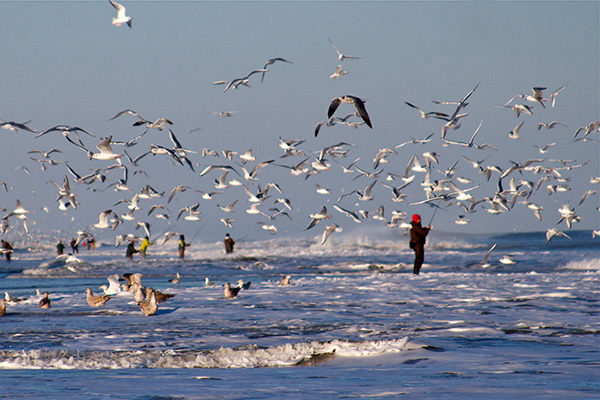
This sudden abundance makes fish go on a kind of feeding spree. With all this fresh food drifting around, fish don’t need much convincing to bite at practically anything that crosses their path. It’s like offering them a gourmet meal when they were just expecting a snack.
For anglers, this is a golden opportunity. Knowing that fish are less picky after a storm, you have the perfect chance to experiment with different baits and lures. Fish won’t think twice about checking out your offerings amidst the banquet the storm has laid out.
While the storm conditions might seem chaotic, it’s this disruption that creates a feeding hotspot. Focus your efforts where you see bird activity or disturbance in the water, as these areas are likely where fish are gorging themselves. It’s smart to be out there as soon as it’s safe and the storm has cleared, to take advantage of the fish’s heightened activity and appetite.
Fish Movement and Accessibility when Surf Fishing After a Storm
When the storm has calmed, fish behavior can shift in ways that are advantageous for anglers, particularly in how fish move towards the shoreline. The churning waters push fish closer to the coast, escaping the turbulent depths and following the trail of nutrients the storm stirred up.
This means that once the skies clear, you might find fish in areas where you don’t normally see them. They become more accessible to you right along the surf, reducing the need to cast far and wide. Essentially, the storm does part of the work by relocating the fish to where they’re easier to reach.
As you gear up to hit the beach, keep an eye on local geography. Features like jetties, sandbars, or points along the shore become prime spots for casting. These structures often create sheltered areas where fish congregate to feed or rest post-storm.
Tactics sometimes need tweaking too. Shorter casts might be your ticket to success since fish are often nosing right up to the beach after a storm. A keen eye on water movement and where waves break can also guide you to the hotspots. It’s about reading the post-storm changes and adapting to where the fish are moving.
With fish movements bringing them closer to you, your strategy should be ready to capitalize on these shifts, ensuring that your time on the water is both productive and thrilling.
Fishing after a storm offers great potential, but water clarity can be a mixed bag, turning the surf into a murky stew. This turbidity, while a natural consequence of storms, poses a unique challenge for anglers as it affects visibility.
- Fish rely heavily on sight to hunt, so cloudy water can make them more cautious due to reduced visibility. This might seem like a hurdle, but it doesn’t mean your efforts are doomed. Instead, it’s about outsmarting the conditions.
- Switching to bright or flashy lures can compensate for low visibility, drawing attention through movement and reflection. Lures with a bit of noise or rattle can also help as they stimulate another sense fish rely on—sound—and can entice them towards your bait even when sight is hindered.
- It’s wise to test varied techniques. Try slow retrieves to give fish time to sense and locate your bait, or opt for larger bait profiles that stand out better amidst suspended particles in the water.
- Understanding the water’s condition is key to selecting your approach. Observing wind direction and water flow post-storm can indicate areas where sediment might settle faster, offering clearing water and a tactical advantage. This way, you tailor your strategy not only to catch fish despite the turbidity but also to turn it into your ally.
Maintaining Safety While Surf Fishing After a Storm
Safety should always be your top priority when fishing after a storm. It’s tempting to rush out amid the excitement, but storm-churned waters can be treacherous. Strong currents and high waves are common post-storm, posing real risks to anglers.
- Before you set out, check local weather updates and tide charts. Knowing the high tide times and current conditions can help you avoid unexpected surges. It’s also smart to scout the area during lower tides to know safe spots for setting up without surprises.
- Debris is another concern. Storms can litter the shoreline with hazards: anything from driftwood to trash washed ashore can trip you up or cause injury. Use caution when walking around and always wear sturdy footwear to protect against sharp objects.
- Having the right gear makes a big difference, too. A life vest might seem excessive, but it could save your life if a rogue wave takes you by surprise. Packing a first aid kit for minor mishaps and a fully charged phone with emergency contacts is wise.
- If you’re fishing with others, keep an eye on each other and have a plan in place for addressing any emergency. Shared knowledge of the area’s potential dangers and staying within sight can significantly reduce risks and improve your overall experience.
So while eager to catch that post-storm bounty, remember that preparedness and being vigilant keep the experience safe and enjoyable, letting you focus on the fish, not mishaps.
The Role of Storms in Annual Fish Migrations
Storms don’t just shake things up temporarily; they play a significant role in the bigger picture of fish migrations. Many species rely on these natural events as signals to start their seasonal journeys. This means that fishing after a storm can coincide with some incredibly productive fishing times.
Take the mullet run for instance. This is a spectacular migration event along the East Coast of the United States, drawing in predators and creating a fishing frenzy. Storms act like a starting gun, urging bait fish to kick off their journey, followed closely by larger fish eager for a feast. It’s an angler’s dream scenario, with fish teeming just off the shores.
Understanding these patterns goes a long way in boosting your surfing fishing game. Tracking annual migrations and storm occurrences helps pinpoint peak times for potentially reeling in coveted species. Local fish reports and migration charts can provide insights into when specific runs might hit certain areas post-storm.
Fishing after a storm isn’t an immediate ticket to the action, though. Timing matters; too early might mean fish haven’t arrived yet, while too late can mean they’ve already moved on. This highlights the importance of local knowledge and being ready to seize opportunities as soon as conditions allow.
Preparing to fish during these migration windows involves more than just timing. Adjusting techniques and gear to cater to migrating species ensures you’re ready to tackle the increased activity, turning awareness and preparation into full tackle boxes and unforgettable catches.
Hurricanes, Severe Storms, and Their Impact on Fishing
While most storms can enhance fishing conditions, hurricanes and severe storms introduce complexities that require awareness and adaptation. Such powerful weather events exert profound influence on fish behavior and movement, often days before they actually hit.
Fish are highly sensitive to rapid changes in barometric pressure associated with these severe storms. As the pressure drops, swim bladders in fish expand, causing discomfort. In response, fish typically head for deeper, calmer waters where pressure is more stable, potentially reducing their presence along the shore.
However, there’s a silver lining. Before retreating, fish often engage in a feeding frenzy, capitalizing on available food before conditions worsen. This pre-storm period can present an excellent opportunity for anglers to make impressive catches right before safety becomes paramount.
Once the storm is over and conditions settle, fish return to the shallows, again following the lure of abundant post-storm nutrients. Understanding this cycle is crucial for timing and planning your fishing expeditions effectively.
Finally, while storms can function as indicators and catalysts for fishing opportunities, navigating their impacts requires respecting the power of nature. Always prioritize safety, and be patient. Often, the best catches happen when fishing after a storm has moved on and fish eagerly return to familiar waters.
Read More Fishing Tips
- 8 Tips on Wade Fishing The Flats For Redfish And Black Drum

- How The Wind Can Be Your Friend When Fishing Inshore Waters
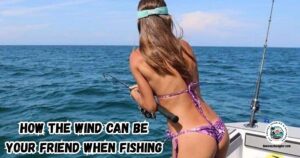
- 17 Emerging Trends In Saltwater Kayak Fishing
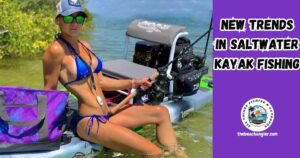
- Tips For Fishing In Different Weather Conditions
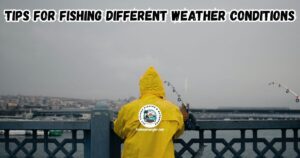
- 6 Tips for Choosing The Right Waders For Saltwater Fishing
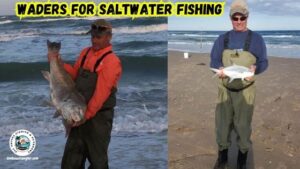
- Essential Baits And Lures For Inshore Saltwater Fishing
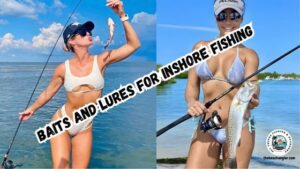
As always, stay safe, enjoy the journey and please try to leave it cleaner than you found it. If you have any comments, questions, ideas, or suggestions please leave them in the comment section below and I’ll get back to you ASAP. You can follow us on Facebook: Rex The Beach Angler, Instagram: thebeachangler7, Twitter: @AnglerBeach, and YouTube: Man Art Creations.
P.S. – Thanks so much for checking out our blog we really appreciate it. Just so you know, we may receive a commission if you click on some of the links that appear on our site. This helps us keep our content free and up-to-date for everyone. We appreciate your support!
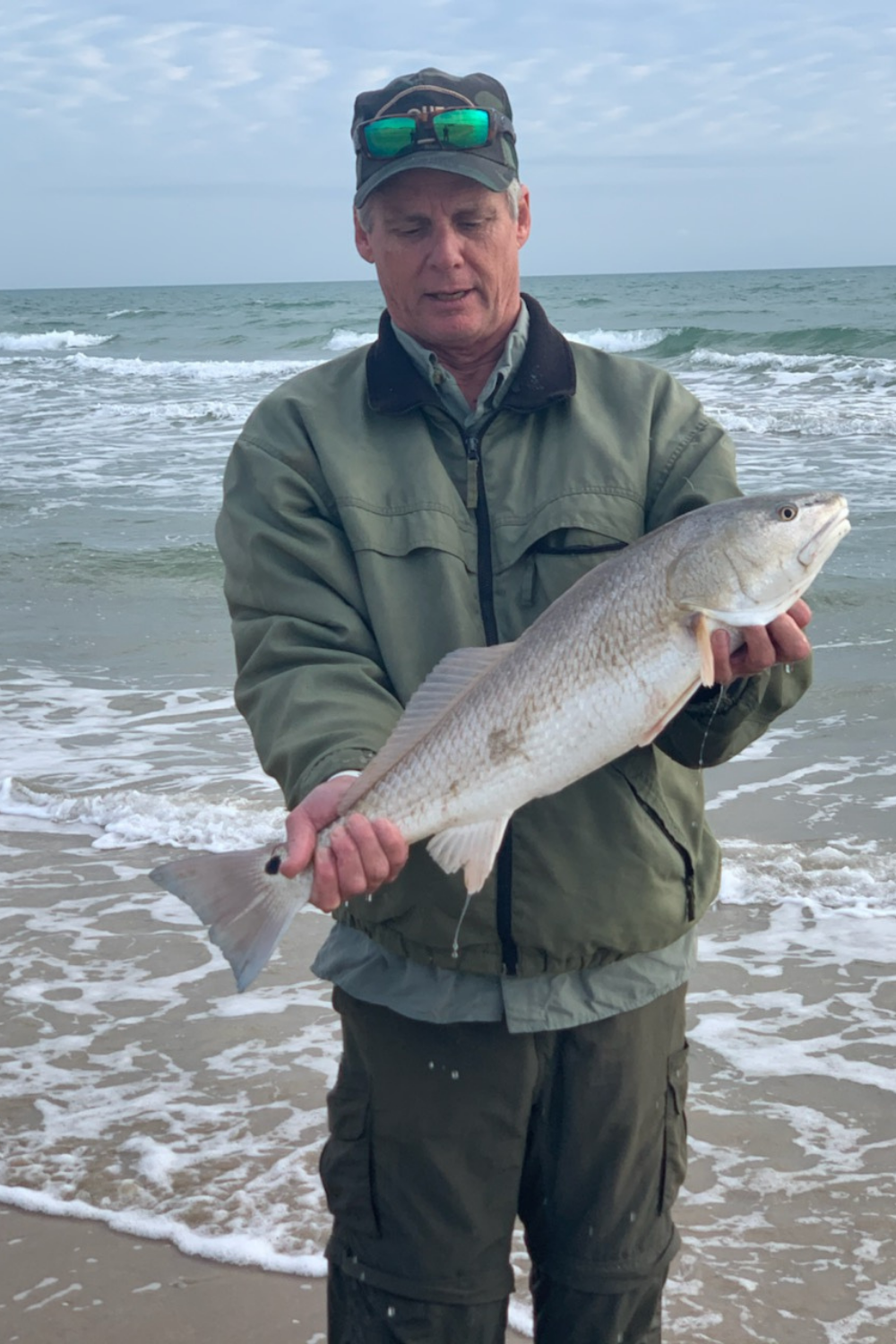
A life long surf fisherman with 50+ years of experience, I am also an avid hunter and outdoorsman. I will be sharing my passion for the outdoors with you so be prepared for hunting, fishing, camping, hiking and more. Along with gear reviews and the latest trends and innovations in the outdoor industry.
